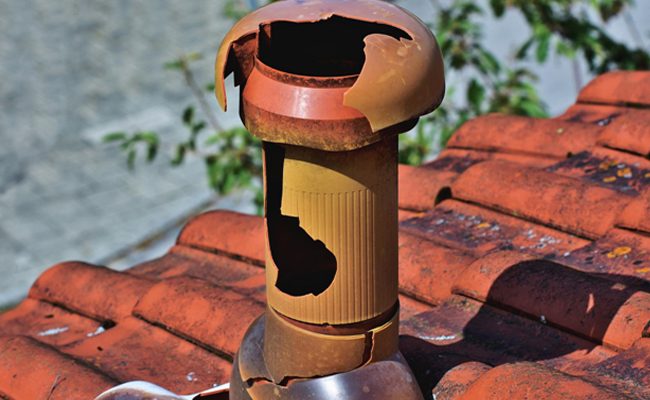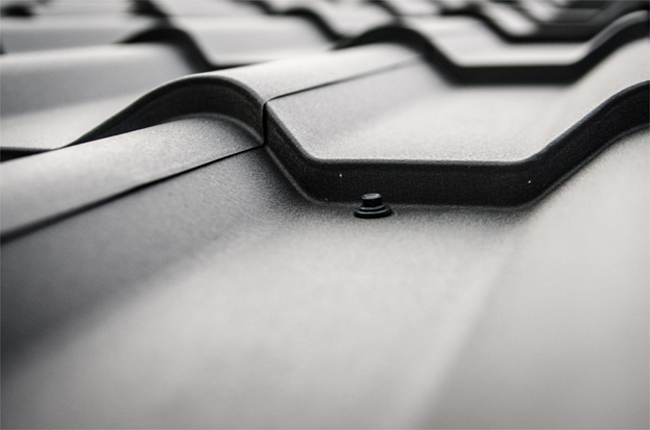
Hail season in Colorado lasts from about April to September, racking up millions of dollars in damages throughout the state. Landscaping, windshields, roofs- nothing is safe from the vicious balls of frozen hate hurtling from the sky. Hailstorms can cause serious structural harm to your home’s roof. If left unrepaired, it can lead to water damage via cracked roofing shingles.
Therefore, in a place where golf ball and bigger-sized hail is the norm, recognizing hail damage is an essential skill. Early detection is one of the best ways to avoid unnecessary damage to your home. It is not always possible to avoid harm to your roof, but the sooner repairs are made, the more likely you are to minimize the need for a more expensive restoration project.
What is Hail?
A type of precipitation that comes with thunderstorms, hail starts as a raindrop that is carried by an updraft into higher parts of the cloud. The upper levels are below freezing, causing the drop to solidify. It drops back down into the lower levels, gathering more moisture before being lifted by another updraft. The process repeats multiple times, making the ball of ice grow until it is too heavy to stay in the air.
At this point the hail plummets to the ground, potentially causing serious property damage. Baseball-sized hail stones can fall at speeds up to one hundred miles per hour. Every year, multiple hailstorms pummel Colorado, causing serious property damage. Let us take a look at how to recognize the damage and when you need to call for an inspection. Visit https://www.gusroofing.com/johnstown-roofing-company/ to learn more about scheduling an inspection.
Signs that can be Spotted from the Ground

While you cannot tell the extent of the damage to a roof from the ground, there are things to look for that will help determine if you should be climbing up for a closer look. If one or more of these signs are present, it is a good indicator you need to break out the ladder. Things to look for are:
- Dented gutters, screens, or downspouts- While not always the case, if a house has damage to the gutters and other equipment, the roof has taken a beating too.
- Damaged siding and windowsills- Dents if the windowsills, casings, and siding are an indicator that the storm was violent enough to damage the walls. Even faint dings are a sign to investigate further.
- Broken windows and torn screens- Big enough hail can crack and break the glass in windows and tear holes in the screening of doors and windows.
- Dented air conditioners and outdoor items- Check every area of your home for hail damage, even the air conditioner. If the sturdy little piece of equipment took a beating, it is likely the roof did too.
- Damaged decks and other painted wood surfaces- Chipped paint as a result of hail impact indicates some pretty hard-hitting ice. Fresh scrapes on wooden fences are also a good indication of damage.
- Dented mailbox- A dented or cracked mailbox is a good clue to how bad the hailstorm was. Holes and cracks will form in plastic boxes, while metal ones will dent.
- Hail dents on cars- If the cars around your neighborhood are looking a little worse for wear after the hailstorm, it is likely so is your roof.
- Broken tree limbs- If the storm was bad enough to bring down large limbs and break branches, chances are it was bad enough to cause problems with your shingles.
Signs to Look for On the Roof
If you spot any of the warning signs from the ground, it is time to break out the ladder and get up on top of the house. Please remember that inspecting a roof can be dangerous. Use all the proper safety gear and utilize common sense. It is ok if you are not confident with climbing up to your roof. Many contractors offer free inspections so you can ask a professional to come to take a look at the potential damage. Learn more about roof safety.
There are several areas to inspect while up on the roof. More than just shingles, you are going to want to look at vents, chimneys, skylights, and any other features. Hail rarely ever comes alone, so there is likely to be wind and other storm damage as well.
- The first thing you want to inspect is the roof vents. Any dents and cracks should be carefully noted. Some chimney covers make it hard to see the area of impact, so be sure to look closely. Metal vents tend to have more obvious dings.
- Next, you need to thoroughly inspect your shingles. Depending on the type of shingle, the damage can be obvious or barely noticeable. For the most part, your roof should not be receiving projectiles that are not hail, so if there is damage, pay close attention to it. Any open spaces where granules have been knocked off are noteworthy. It may be small, but it is essential to note all potential problems to avoid them getting worse. Missing shingles are an escalation of the problem and require attention. Moss or algae growth indicates that the shingles might be holding moisture due to damage sustained from previous storms. Curling and cracked shingles age faster than healthy ones.
- There are many different types of shingles, depending on what you have, you need to check for different kinds of damage.
a. Wood Shingles split down the middle.
b. Clay and slate crack and gouge or even shatter
c. Metal roofing will have impact dents – This type of roof is the easiest to spot harm on since the dents are so pronounced. Bring chalk up with you and turn it lengthwise and rub it along the affected areas to reveal all the dents and dings. - Hail spatter can help determine the size and direction of the hail. This usually results from slushy hail splattering all over the roof on impact. It leaves stains and marks on shingles and rooftop appliances. They are good indicators but cannot usually be included in an insurance claim.
Look for loose granules that have broken off and washed into the gutter. There is technically no hole in the roof, so, are some loose granules really a problem? The answer is usually yes. The amount of force it takes to knock off the surface material is incredible. That kind of impact is sure to do damage, though it might not be surface level. Water can leak in over time, creating serious water damage before you notice anything wrong.
Time to decide if you can make an insurance claim. The standard damage to make a claim is usually eight or more hits within a ten-foot by ten-foot square on three or more parts of the roof. Circle each hit with chalk and take clear pictures for your records.
How does Hail Affect a Roof?
The severity of the damage hinges on several different factors:
- Type of materials used. Old or aging materials are more vulnerable and different materials are hardier than others.
- Roof slope and construction. Believe it or not, the angle of the roof determines how much damage it will take, as will how well it is built.
- Hail dimensions. The size, density, shape, velocity, and angle of its fall all determine how badly the ice is going to hurt your shingles.
- The number of shingle layers. The top layers of shingles are more vulnerable than the lower layers. The shingles right against the wood have more support helping them endure harder hits.
Is the Damage Cosmetic or Functional?
A Functional hail issue is a harm to the shingles that affects the integrity of the roof. Hail damage to a roof is specified as the harm that affects the water shedding capability and its longevity. If a shingle will not last as long as it should, due to the hail, repairs should be scheduled.
Cosmetic issues are more about form than function. If it does not affect the roof’s ability to protect your home from the outside elements, then it is not a necessary fix. Insurance companies are protected from having to pay for cosmetic roof issues. It is important to get a roof inspector in though, so they can ensure no serious issues are getting passed off as cosmetic by the insurance company.
One Last Place to Check
Take some time to scout around inside your home for water damage. Check any places that have leaked before. It is also important to ensure that no water stains on the walls and ceiling have gotten any bigger than they already were. Mildew and water in light fixtures are also important factors to keep an eye out for. Be sure to keep a diligent eye out for potential issues after each hailstorm.
Leave a Reply